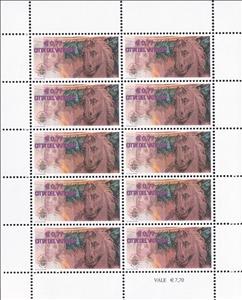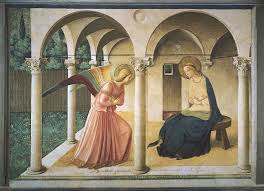Full Pane: Fresco in the Chapel of Baptism (Vatican City 2003)
Fresco in the Chapel of Baptism (Vatican City 2003)
23 September (Vatican City ) within release The animals in the Vatican basilica goes into circulation Full Pane Fresco in the Chapel of Baptism face value 10*0.77 Vatican lira
| Full Pane Fresco in the Chapel of Baptism in catalogues | |
|---|---|
| Michel: | Mi: VA 1465KB |
Full Pane is vertical format.
Also in the issue The animals in the Vatican basilica:
- Stamp - Fresco in the chapel of baptism face value 0.21;
- Stamp - Fresco in the chapel of baptism face value 0.31;
- Stamp - Fresco in the chapel of baptism face value 0.77;
- Stamp - Fresco in the chapel of baptism face value 1.03;
- First Day Cover - The animals in the Vatican basilica face value 0.52;
- First Day Cover - The animals in the Vatican basilica face value 1.80;
- Full Pane - Fresco in the Chapel of Baptism face value 10*0.77;
- Full Pane - Fresco in the Chapel of Baptism face value 10*1.03;
Full Pane Fresco in the Chapel of Baptism it reflects the thematic directions:
A church building, often simply called a church, is a building used for Christian religious activities, particularly worship services. The term in its architectural sense is most often used by Christians to refer to their religious buildings, but it is sometimes used (by analogy) for buildings of other religions. In traditional Christian architecture, the church is often arranged in the shape of a Christian cross. When viewed from plan view the longest part of a cross is represented by the aisle and the junction of the cross is located at the altar area. Towers or domes are often added with the intention of directing the eye of the viewer towards the heavens and inspiring church visitors. Modern church buildings have a variety of architectural styles and layouts; many buildings that were designed for other purposes have now been converted for church use; and, similarly, many original church buildings have been put to other uses. The earliest identified Christian church was a house church founded between 233 and 256. During the 11th through 14th centuries, a wave of building of cathedrals and smaller parish churches occurred across Western Europe. A cathedral is a church, usually Roman Catholic, Anglican, Oriental Orthodox or Eastern Orthodox, housing the seat of a bishop.
Fresco (pl. frescos or frescoes) is a technique of mural painting executed upon freshly laid ("wet") lime plaster. Water is used as the vehicle for the dry-powder pigment to merge with the plaster, and with the setting of the plaster, the painting becomes an integral part of the wall. The word fresco (Italian: affresco) is derived from the Italian adjective fresco meaning "fresh", and may thus be contrasted with fresco-secco or secco mural painting techniques, which are applied to dried plaster, to supplement painting in fresco. The fresco technique has been employed since antiquity and is closely associated with Italian Renaissance painting.
The horse (Equus ferus caballus) is one of two extant subspecies of Equus ferus. It is an odd-toed ungulate mammal belonging to the taxonomic family Equidae. The horse has evolved over the past 45 to 55 million years from a small multi-toed creature, Eohippus, into the large, single-toed animal of today. Humans began to domesticate horses around 4000 BC, and their domestication is believed to have been widespread by 3000 BC. Horses in the subspecies caballus are domesticated, although some domesticated populations live in the wild as feral horses. These feral populations are not true wild horses, as this term is used to describe horses that have never been domesticated, such as the endangered Przewalski's horse, a separate subspecies, and the only remaining true wild horse. There is an extensive, specialized vocabulary used to describe equine-related concepts, covering everything from anatomy to life stages, size, colors, markings, breeds, locomotion, and behavior.



